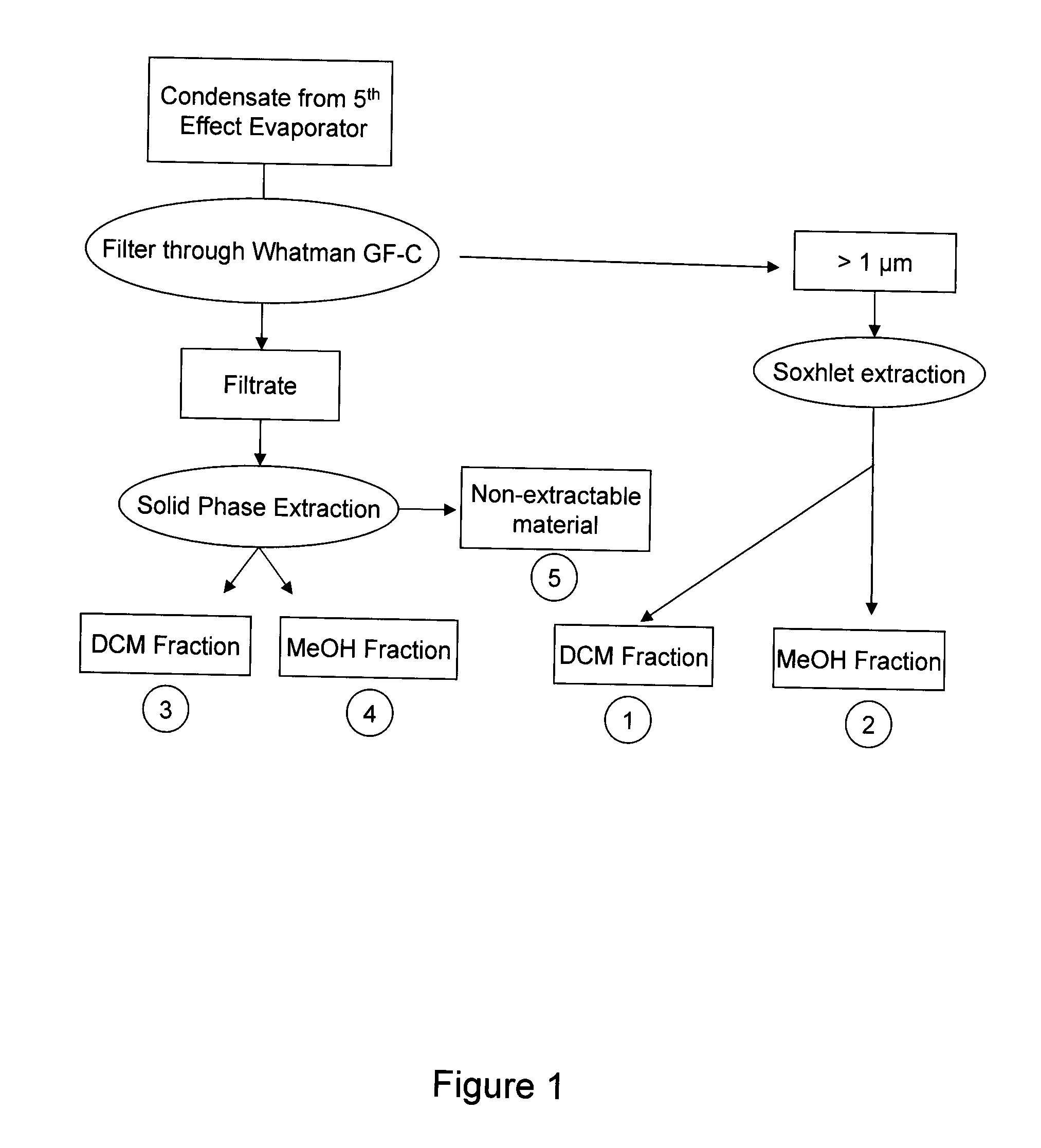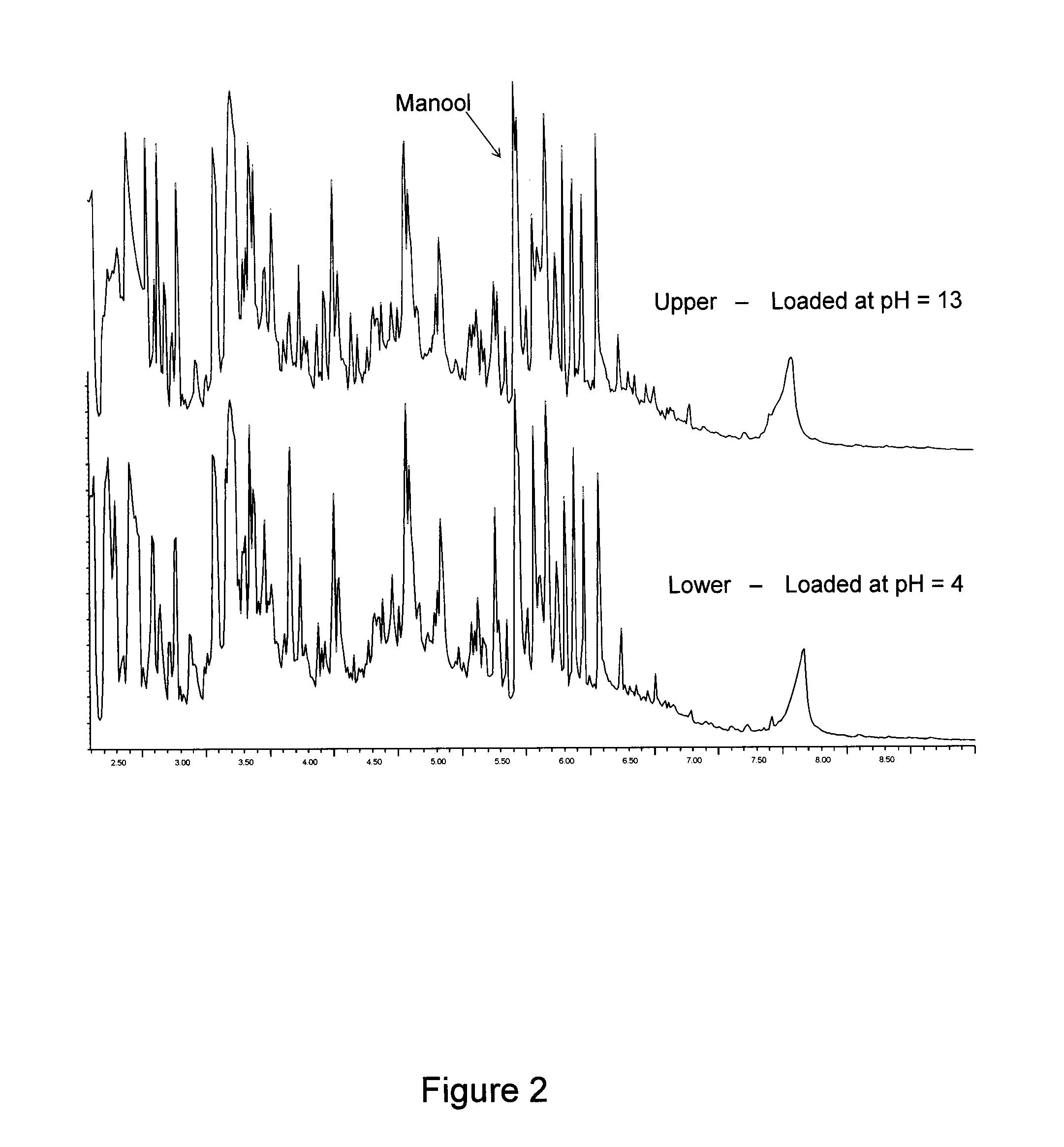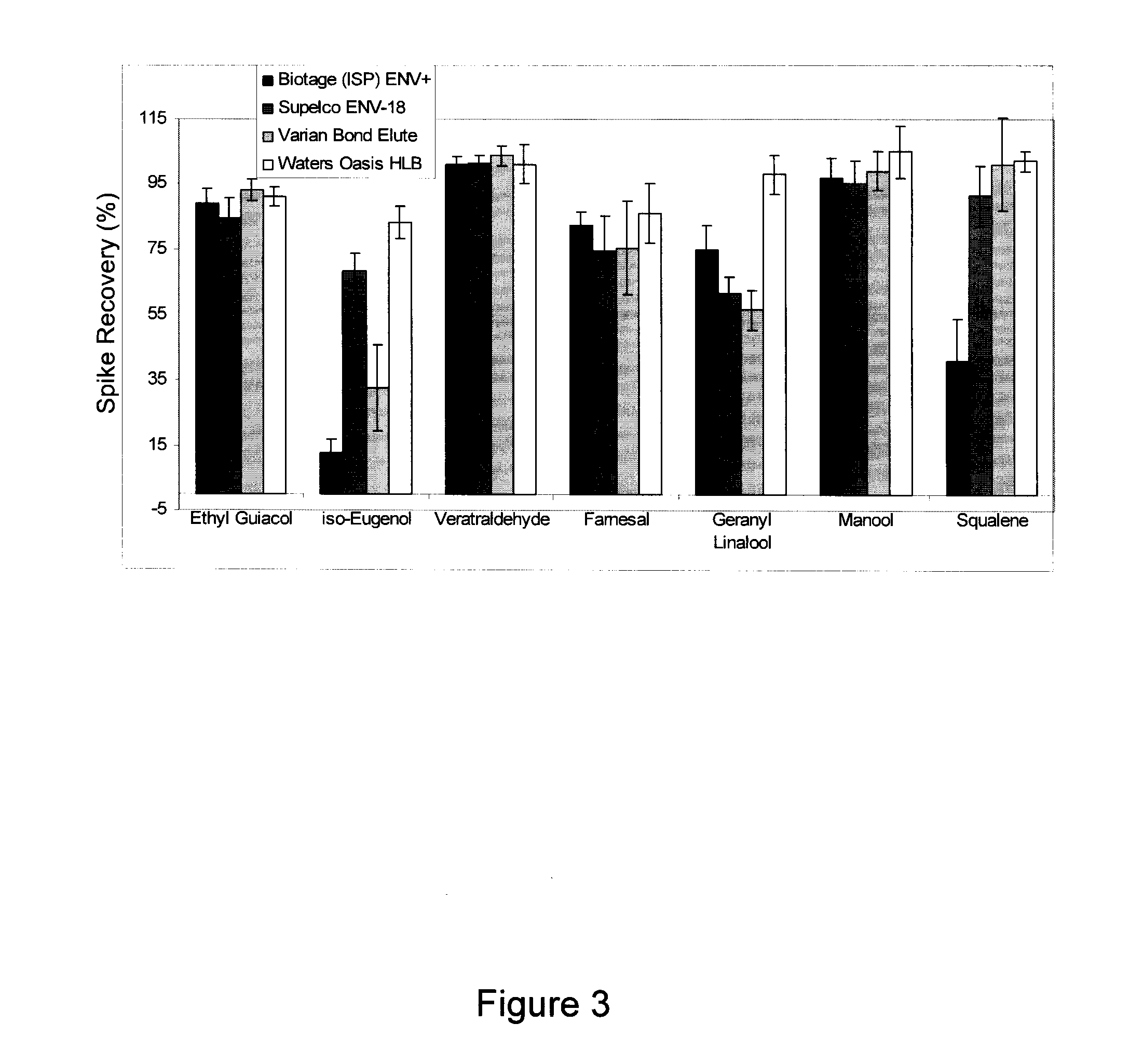Process for refining chemicals from pulp and paper mill wastewaters
a technology of chemicals, applied in the field of processes to recover chemicals from condensates at pulp and paper mills, can solve the problems of little attention given to the recovery of natural products of commercial value, and achieve the effect of enhancing the precipitation of at least one target compound
- Summary
- Abstract
- Description
- Claims
- Application Information
AI Technical Summary
Benefits of technology
Problems solved by technology
Method used
Image
Examples
example 1
Solid Phase Extraction
[0056]Black liquor condensates were collected from Canadian kraft mill chemical recovery evaporators from a pulp and paper mill processing softwood (spruce, pine, fir) tree species. The condensates were sampled specifically from the 5th effect evaporator (or final black liquor evaporator prior to discharge) in stainless steel containers and shipped to the laboratory for purification using the bench scale method described below, and outlined in the flow diagram in FIG. 1.
[0057]Upon arrival, condensate pH (typically >10.5) was lowered using high purity inorganic acid (i.e. hydrochloric acid) to pH=4.0±0.5. It should be noted, however, that subsequent steps of solid phase extraction (SPE) and filtering at ambient pH (pH=10.5) has also been successfully carried out. In the case of manool, geranyl linalool and other terpenes, they are essentially considered “neutrals” so they are extracted regardless of pH. FIG. 2 shows chromatographs from a condensate sample that w...
example 2
Liquid-Liquid Extraction
[0071]Samples from a Canadian kraft pulp and paper mill were obtained and initially treated identically to Example 1, although unlike Example 1 the samples were not filtered prior to extraction. The general method is outlined in the flow diagram in FIG. 7.
[0072]A 500 mL volume of sample was poured into a continuous liquid-liquid extractor, and 500 mL of water immiscible solvent was poured into the associated round-bottomed flask. The solvent was heated and continually maintained under reflux, allowing it to pass through the condensate sample and extract material before cycling back to the round bottom flask. Following a minimum of 12 hours of cycling, the round bottom flask was removed. Both extraction solvent and the extracted material were contained in the round bottom flask. The target compounds extracted from the condensate and now contained in the solvent were then dried using anhydrous sodium sulfate, and the solvent was evaporated off using a rotary ev...
example 3
Extract Purification
[0080]The following method is an example of how the extracts obtained in Examples 1 and 2 can be further purified. The following method is described with reference to the noted samples obtained in the SPE method of Example 1, although the same methodology is applicable to the extracts obtained in the liquid-liquid extraction method of Example 2.
[0081]Compounds contained within the FP-DCM and the SPE-DCM fractions were purified using high-pressure liquid chromatography (HPLC) to obtain isolates of individual compounds. The procedure is as follows:[0082]i. Aliquots of each fraction are injected on a normal phase silica column (Phenomenex Luna 250 mm×4.6 mm; 5 μm particle size, 100 Å pore size) at a flow rate of 0.5 mL / min with an optimized elution gradient as follows:[0083]initial conditions of 50:50 hexane / DCM is held for 15 min,[0084]linear ramp to 100% DCM over 10 min, hold for 25 min,[0085]linear ramp to 50:50 dichloromethane / iso-propyl alcohol over 10 min, hol...
PUM
| Property | Measurement | Unit |
|---|---|---|
| pH | aaaaa | aaaaa |
| pore size | aaaaa | aaaaa |
| pH | aaaaa | aaaaa |
Abstract
Description
Claims
Application Information
 Login to View More
Login to View More - R&D
- Intellectual Property
- Life Sciences
- Materials
- Tech Scout
- Unparalleled Data Quality
- Higher Quality Content
- 60% Fewer Hallucinations
Browse by: Latest US Patents, China's latest patents, Technical Efficacy Thesaurus, Application Domain, Technology Topic, Popular Technical Reports.
© 2025 PatSnap. All rights reserved.Legal|Privacy policy|Modern Slavery Act Transparency Statement|Sitemap|About US| Contact US: help@patsnap.com



